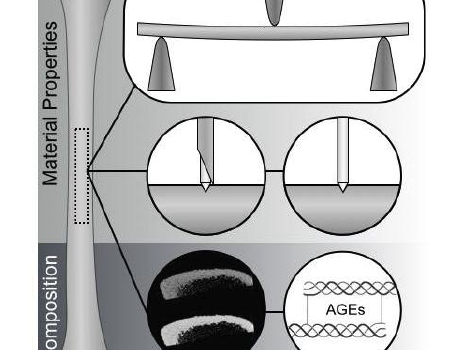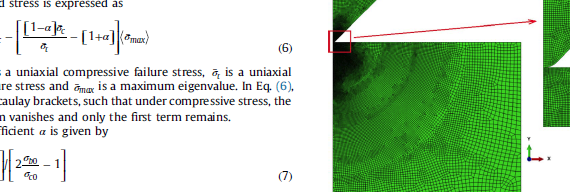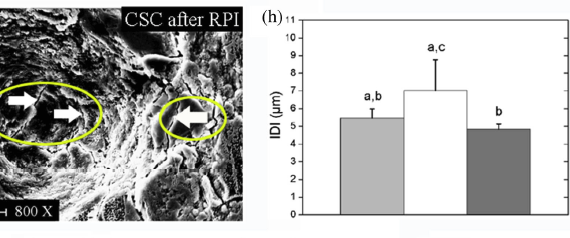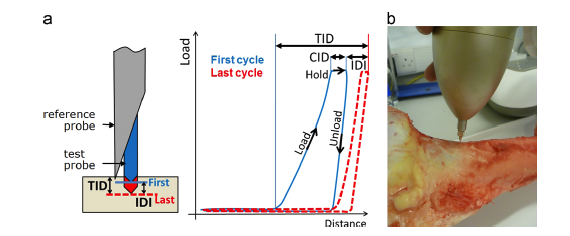Abstract BACKGROUND: Successful fracture fixation depends critically on the stability of the screw-bone interface. Maximum achievable screw torque reflects the competence of this interface, but it cannot be quantified prior to screw stripping. Typically, the surgeon relies on the patients’ bone mineral density and radiographs, along with experience and tactile […]
Reference point indentation
Abstract Gap junctions are formed from ubiquitously expressed proteins called connexins that allow the transfer of small signaling molecules between adjacent cells. Gap junctions are especially important for signaling between osteocytes and other bone cell types. The most abundant type of connexin in bone is connexin 43 (Cx43). The C-terminal […]
Abstract The assessment of fracture risk often relies primarily on measuring bone mineral density, thereby accounting for only a single pathology: the loss of bone mass. However, bone’s ability to resist fracture is a result of its biphasic composition and hierarchical structure that imbue it with high strength and toughness. […]
Abstract Reference Point Indentation (RPI) is a novel technique aimed to assess bone quality. Measurements are recorded by the BioDent instrument that applies multiple indents to the same location of cortical bone. Ten RPI parameters are obtained from the resulting force–displacement curves. Using the commercial finite element analysis software Abaqus, […]
Abstract The objective of this study was to elucidate micromechanical properties of Biodentine and two experimental calcium silicate cements (CSCs) using Reference Point Indentation (RPI). Biomechanical characteristics of the cement type and the effects of a radiopacifier, liquid components, acid etching treatment and bioactivation in simulated body fluid (SBF) were […]
Abstract Reference Point Indentation (RPI) is a novel microindentation tool that has emerging clinical potential for the assessment of fracture risk as well as use as a laboratory tool for straight-forward mechanical characterisation of bone. Despite increasing use of the tool, little research is available to advise the set-up of […]
Abstract Reference Point Indentation (RPI) has been proposed as a new clinical tool to aid the diagnosis of Osteoporosis. This study has examined the performance of the tool within entire femurs to improve the understanding of the mechanical properties of bone and also to guide future RPI testing to optimize […]
Abstract The objective of this study was to determine the effects of various irrigation solutions on root canal dentine and gutta-percha surface properties. In addition, the effects of disinfectant chemicals on the wettability and surface morphological properties of the filling materials were evaluated. Ethylenediaminetetraacetic acid (EDTA), citric acid, and ozone […]
We would like to thank Allen and colleagues for their thorough review of reference point indentation (RPI) for assessing bone mechanical properties in vivo.(1) The authors have focused on two separate RPI devices, the BioDent® and the OsteoProbe®, and have gone to great lengths to compare and contrast these instruments, which differ considerably […]
Abstract In the present study, the possibility that a diabetic (DM) status might worsen age-related bone deterioration was explored in mice. Male CD-1 mice aged 2 (young control group) or 16 months, nondiabetic or made diabetic by streptozotocin injections, were used. DM induced a decrease in bone volume, trabecular number, […]







